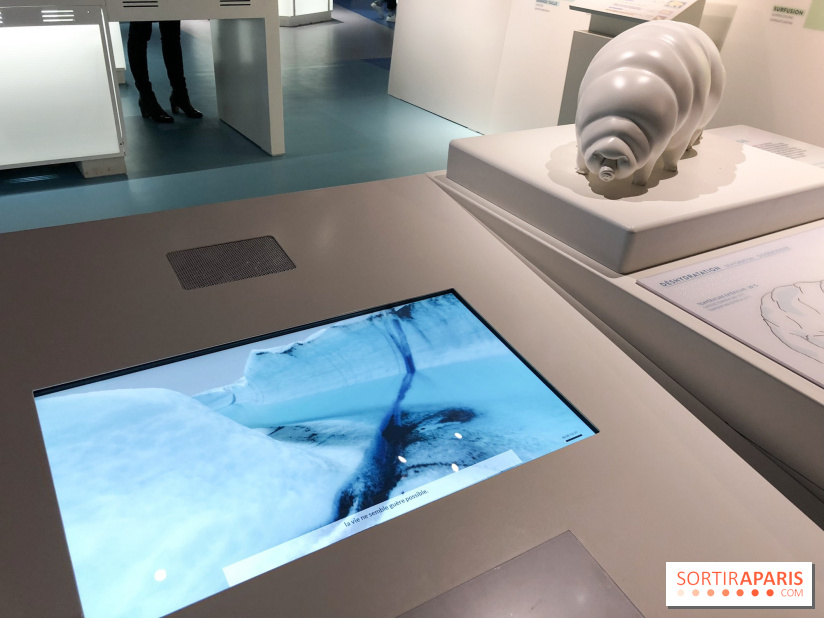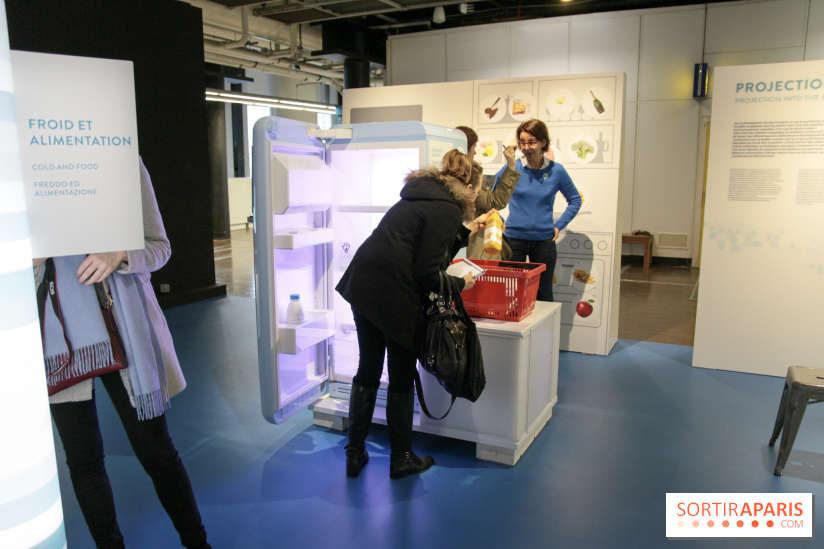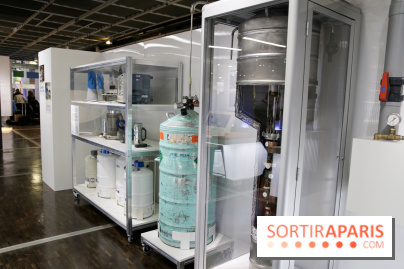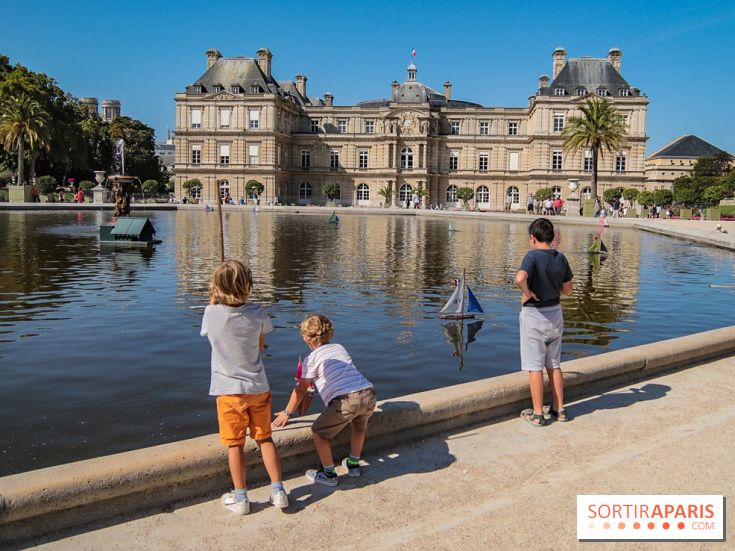From December 5, 2017 to August 26, 2018, cold in all its shapes is highlighted at the Cité des Sciences et de l’Industrie through a 600-sqm exhibition.
Focused on the theme: cold, a challenge for humanity, the exhibition allows us to discover the challenge taken up because of the cold by visiting three areas corresponding to varied universes: human body and living bodies, daily life and industrial applications, science and research.
Challenges for the living:
Discover what lies behind the notion of “apparent temperature” for humans, animals or plants.
Facing the cold, how do living react? What are the damage for our organism? What are the effects on plants? How do some animals survive where cold is the most extreme? How to use cold to heal, preserve or study living bodies? How can we cryopreserve a human? Does cold allow living bodies to stretch some limits? What are they?
Living with cold
Water being the main element constituting living bodies, their cells are likely to be damaged by the creation of ice crystals as soon as the temperature drops below 0°C (32°F). Yet, some very peculiar organisms can avoid this fatality.
In the “Living with cold” area featuring three themed blocks, discover the limits cold can stretch when we are refereeing to living bodies:
Don’t miss:
Challenges for the society:
Discover the “faux” cold, how it’s used in our daily lives and in the industry field.
How do we use cold in refrigerating machines? How do they work? Why does the refrigerator warm up your kitchen? Why shouldn’t you break the cold chain? What are the cold applications in the various fields of the human activity and the daily life?
Creating cold and using it
Visit the three blocks devoted to the challenges of the society in order to know more about the quest of “created” cold and its applications.
Don’t miss:
Challenges for Science:
In a décor inspired by low temperature labs, get acquainted with tools and works of the searchers. Discover the notion of absolute zero and the strange behavior of material when approaching this extreme cold limit.
What do we know about the material behavior at such extremely low temperatures? What does happen when we force gas to liquefy when cooled down? Why do we do it? What is absolute zero? Why can’t we ever approach it? How does the material behave when approaching absolute zero?
Cryogeny and low temperatures
In the 19th century, we used to call permanent gases all the gases we couldn’t liquefy by simple compression at room temperature: they had to be cooled down. This scientific challenge had been defeated at the turn of the century. Liquefying these gases allowed to create very low temperatures (under 120 K or -153.15°C or -243.67°F) leading then to a whole range of scientific and technic disciplines studying them: cryogeny.
Low temperatures are a true challenge for those handling them: cold can be contained, controlled and used with the greatest care, at risk of losing control!
In the “Challenges for Science” area, explore the phenomena related to the effects of low temperatures on material.
Don’t miss:
In shorts, here’s a very playful and nice exhibition like the Cité des Sciences et de l’Industrie enjoys doing, it so that we can know everything about cold.
Practical information:
Cold
At the Cité des Sciences et de l’Industrie
From December 5, 2017 to August 26, 2018
From Tuesday to Saturday from 10 a.m. to 6 p.m.
And Sunday from 10 a.m. to 7 p.m;
From 9 years old
Regular rate: €12
Reduced rate: €9
The ticket gives access to every Explora exhibitions, the Planetarium, the L’Agronaute submarine and the Louis-Lumière cinema
Please note that it's been over 4 years since our last visit, so the place and experience may have changed.
Dates and Opening Time
From December 5, 2017 to August 25, 2018
Location
Cité des sciences et de l'industrie
30 Avenue Corentin Cariou
75019 Paris 19
Access
Metro: line 7, Porte de la Villette station. Bus: lines 139, 150, 152, Porte de la Villette station. Tramway: T3b, Porte de la Villette station.
Prices
Tarif réduit: €9
Plein Tarif: €12
Recommended age
From 9 years old
Official website
www.cite-sciences.fr



























